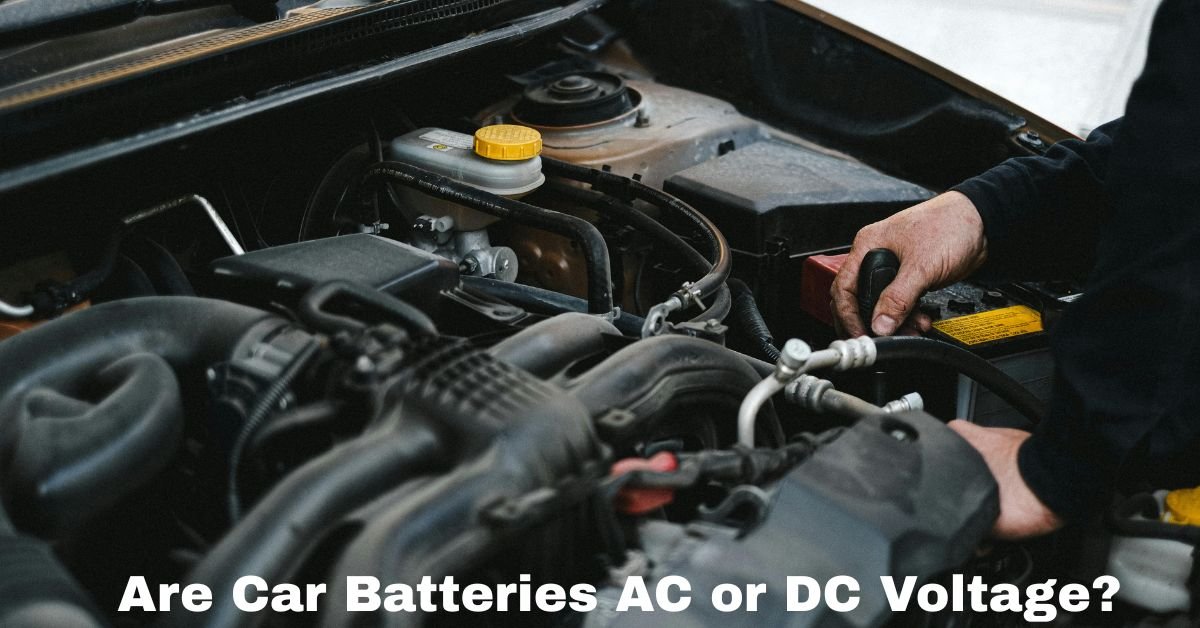When it comes to powering up your vehicle, there’s one crucial component that makes everything run — the car battery. But how does this little powerhouse work? And, more importantly, is it supplying AC or DC voltage to your vehicle? The short answer is: car batteries provide DC (direct current) voltage, but let’s dive deeper into why this is the case and how it impacts your vehicle.
Title: Are Car Batteries AC or DC Voltage? Understanding the Power Behind Your Car
What Is DC Voltage?
Before diving into why car batteries use DC voltage, let’s break down what DC voltage actually is. Voltage is essentially the “push” that moves electricity through a circuit, and there are two main types of voltage: alternating current (AC) and direct current (DC).
- Alternating Current (AC): In AC, the direction of the electric charge flow periodically reverses. This is the type of voltage commonly found in your home appliances and power outlets.
- Direct Current (DC): In DC, the electric charge flows in one constant direction. This is the type of voltage used in batteries, such as your car battery, and is ideal for powering devices that require a steady, uninterrupted flow of electricity.
Why Do Car Batteries Use DC Voltage?
Car batteries, like all rechargeable batteries, store electrical energy in the form of DC power. The key reason for this lies in the way the vehicle’s electrical systems are designed.
- Engine Starting System: The primary purpose of a car battery is to start the engine. This process requires a quick burst of power to the starter motor. A direct current allows for a consistent flow of energy, which is necessary to spin the motor and start the engine.
- Electrical Components: Most of the electrical components in your car, such as the lights, radio, and air conditioning, are designed to run on DC voltage. While your car may have an alternator to generate electricity once the engine is running, it still outputs DC to recharge the battery and power the car’s systems.
- Efficient Energy Storage: DC is more efficient for storing energy in batteries. While AC voltage can be used for power transmission over long distances (like in the power grid), DC is better for storage in batteries, which is why it’s used in car batteries, laptops, cell phones, and other portable devices.
AC vs. DC in Cars: Where Does AC Come In?
So, if your car battery supplies DC voltage, why do you sometimes hear about AC in relation to cars? The answer is simple — the alternator.
Once the engine starts, the car’s alternator takes over the job of supplying power to the car’s electrical systems and recharging the battery. The alternator generates AC power because it is more efficient at generating electricity. However, this AC power is immediately converted to DC power by a component called the rectifier, which allows it to be stored in the battery and used to power the vehicle’s electrical systems.
Must Read: Why Is My Car Smoking From The Hood?

Why Not Use AC in Car Batteries?
AC power might seem like an obvious choice for powering cars, especially given that it’s used in most home appliances. However, there are several reasons why DC is a better option for car batteries:
- Battery Efficiency: As mentioned, DC is far more efficient for storing energy in a battery. If AC were used, the battery would need a complex system of components to convert the AC to DC for storage, which would reduce efficiency.
- Vehicle Electrical Systems: Most of the electrical systems in a vehicle, including lights and ignition systems, are designed to work with DC voltage. Converting AC to DC to make it usable would add unnecessary complexity.
- Practicality: The ability to quickly provide a burst of power (DC) to the starter motor is essential for starting the engine. AC would not offer the immediate, consistent flow of power that DC provides.
What Happens When a Car Battery Dies?
Now that we know car batteries use DC voltage, let’s address a common scenario — a dead battery. When a car battery runs out of charge, it can no longer supply the necessary DC power to the starter motor, electrical components, or other systems. That’s why it’s common to jump-start a car using another battery or a portable jump starter — these devices provide the necessary DC power to get the engine going again.
Conclusion: DC Power is Essential for Your Car Battery
In summary, car batteries use direct current (DC) voltage because DC is the most efficient form of power for storing energy in a battery and for powering the vehicle’s systems. While the alternator generates alternating current (AC), it’s converted into DC to keep everything running smoothly. The design of car electrical systems, including the need for reliable and steady power to start the engine, makes DC voltage the obvious and necessary choice.
Understanding this fundamental difference between AC and DC is key to appreciating how your car works. The next time you start your car or hear about the battery, you’ll know exactly what type of power is driving your vehicle.
